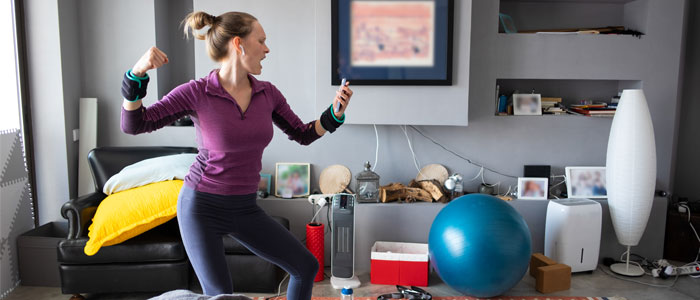How to Make the Best Exercise Playlist
11th Feb 21

When it comes to starting a workout, for many of us, the first step is to put some music on to keep us motivated and make things fun. Choosing the right music, though, is always a challenge, and how do you know that it is going to be suitable for the workout you are doing? We’re going to walk you through making the best exercise playlist for your home workouts!
Want to move fast? Jump to the right section below.
Benefits of Music on Exercise

Making the right exercise playlist doesn’t mean just throwing a bunch of songs into one place and getting started. You need to pick songs that will keep you motivated and push you to get through your workout.
Making a playlist can be like setting times within your exercise; the fast songs mean you have to push yourself, and the slow song means you can slow it down or take a breather. People tend to stick to a rhythm, and if you are providing your own rhythm, you can make the most out of your workout.
Other benefits of exercising to music are:
- To distract you from the strain of exercise
- Help you to enjoy exercising more
- It can improve your mood during a workout
- It can make you push yourself
Warm-Up
No matter what type of workout you are doing, you always need to warm up. So for your playlist, start it with one or two steady songs to get you revved up and motivated.
This is also a good time to maybe opt for a tune you really like and that you know will get you fired up. If you start your exercise with your favourite song, you know it is going to motivate you to continue.
The Workout

For the workout itself, you need to judge the tempo of the exercise alongside your heartbeat. For example, yoga will require slow, calming music, and cardio will need a faster beat. So this is where you need to make the decision, even if you make multiple playlists for different workout types.
When it comes to the tempo of the music, beats per minute (BPM) can be a good way to match your playlist to your intended heart rate for each section. So if you want a faster heart rate, you need a higher BPM. If you need help figuring out the BPM of a song, try here, this website will tell you the BPM of any song.
Each type of workout will have its own BPM:
- Low-Intensity Activities: 60 to 90 BPM
- HIIT: 140 to 180-plus BPM
- Cardio: 120 to 140 BPM
- Strength: 130 to 150 BPM
Start by judging what tempo you think you will need, and then pick songs to match. If you want to do a HIIT workout, a combination of a fast song and a slow song would be a good way to plot your progress and timings. For cardio, you would need a playlist of songs of the same tempo.
Cool Down
Cooling down is much the same as warming up. A cool down is used to slowly lower the heart rate back to a resting state, so a slower tempo level is probably best. Why not end your workout as you started it too? Use your cool down to play a favourite song to keep the good mood created by your workout going.
Where to Get a Playlist
We advise making your own playlist. This way, it only has songs you like in it, and there is no chance of you getting distracted by a tune you don’t like. However, if you would prefer a pre-made one, there are plenty of apps and sites you can use to get something.
Here are a couple of Spotify playlists we like:

Before beginning any exercise or nutrition program, consult your physician, doctor or other professional. This is especially important for individuals over the age of 35 or persons with pre-existing health problems. Exercise.co.uk assumes no responsibility for personal injury or property damage sustained using our advice.
If you experience dizziness, nausea, chest pain, or any other abnormal symptoms, stop the workout at once and consult a physician or doctor immediately.









